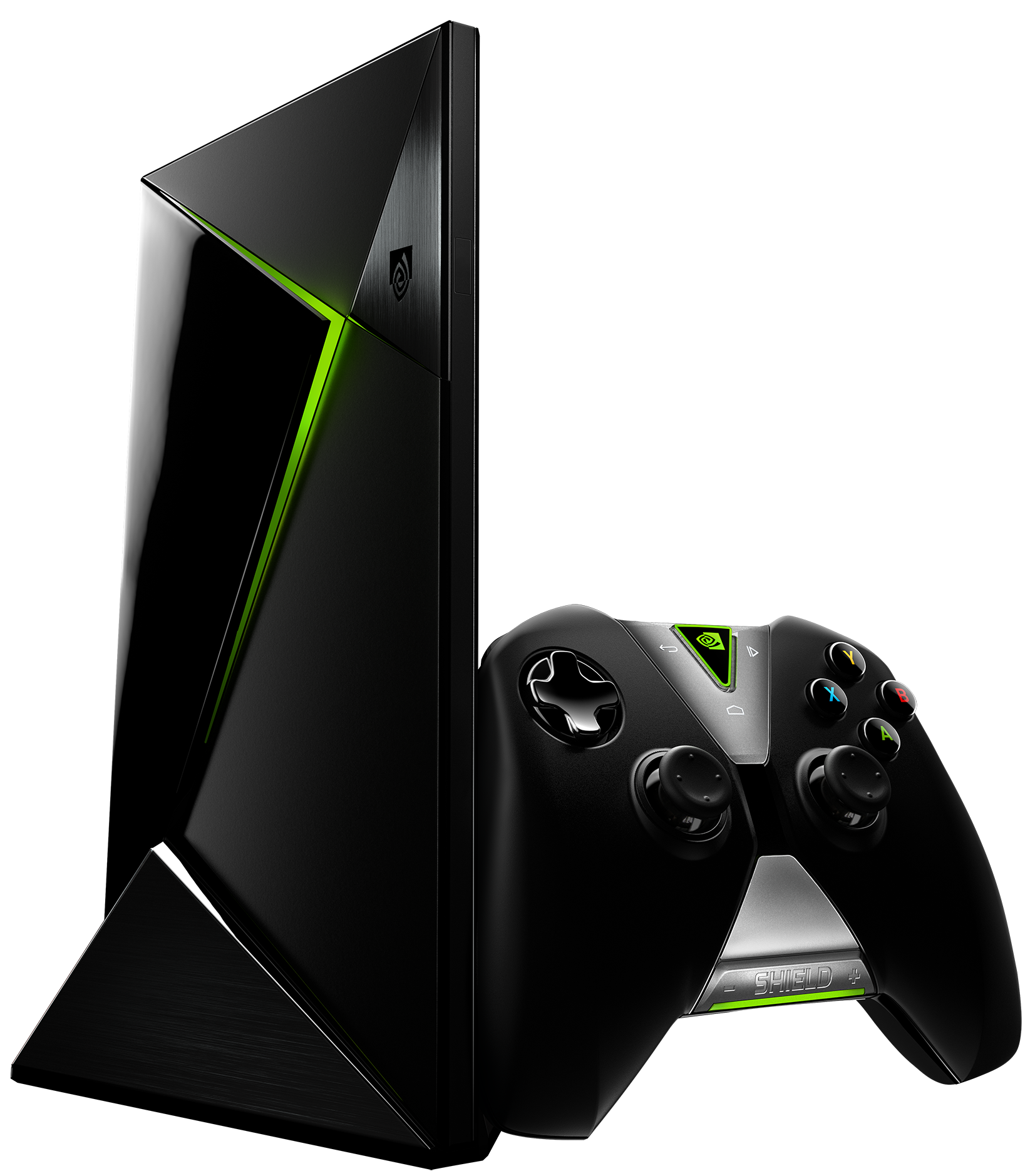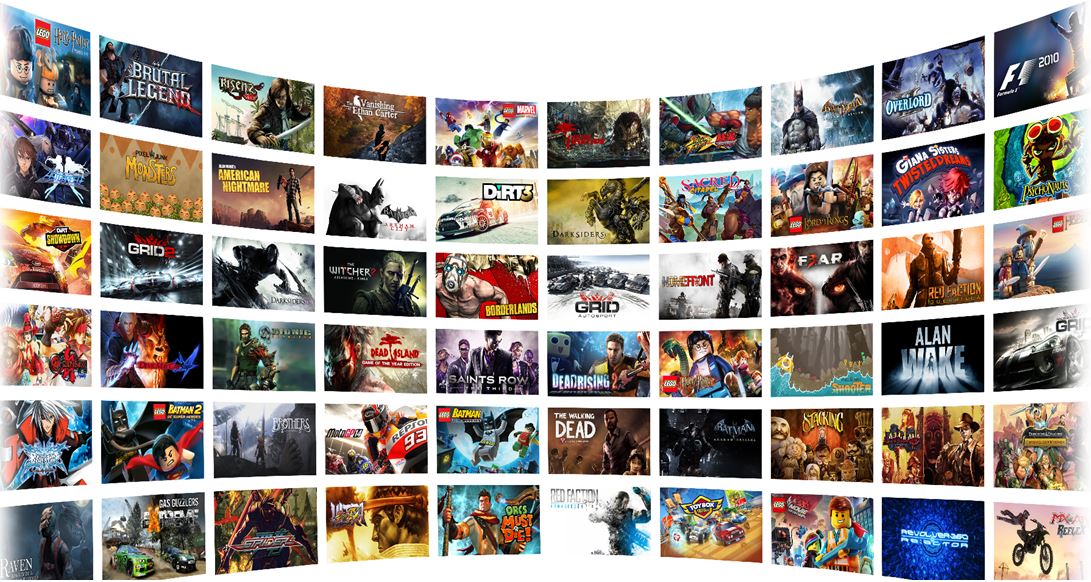GRID No More: Nvidia Launches 'GeForce Now' Streaming Service, Updates Shield Android TV (Updated)
Four months after its release, Nvidia's Shield Android TV device continues to get more updates in the form of more apps, 4K gaming, and a new game streaming service.
More Apps
Nvidia's living room box continues to bolster its catalog of entertainment apps in an effort to keep ahead of consumer demands as well as staying on top of the competition. This includes a list of current and upcoming apps including Twitch and the WWE Network, HBO Now, and Showtime Anytime.
Nvidia is also increasing the number of Android gaming apps as well. However, to go along with the device's ability to display certain videos and movies in 4K resolution, a few Android games will be playable in 4K. At the moment, the company will start with 10 to 12 games in 4K, with more coming in the future. It's important to note that even though the select games will get a 4K upgrade, it might not look as clear as players would expect. Certain assets within the game won't look better because it's up to the developer to change those elements to suit the higher resolution. Still, expect to see less jagged edges on objects as more pixels are used to create each image.
Goodbye GRID, Hello GeForce Now
For the past two years, a few Nvidia fans were beta-testing GRID, the company's game streaming service. When the Shield Android TV device came out, GRID was one of the main attractions, and Nvidia had plans to turn the free service into a subscription-based program at some point. However, GRID is now phased as a new service will take its place, titled GeForce Now.
The change is instantaneous. Those who were using GRID before will notice that it's gone from the home screen. In its place is the GeForce hub. Nvidia said that on the streaming side, the biggest change is in latency. The company's overall goal with the new service is instantaneous content, with games starting in less than 30 seconds. The servers utilize Kepler-based GeForce GTX GPUs alongside various GameWorks elements such as ShadowWorks and PhysX.
The most obvious change is in the UI. The various games are now placed in various categories so you can easily browse a certain franchise or genre. In addition, you can utilize the Shield remote and issue voice commands to find a certain game on the list.
At the moment, there are over 50 games available on GeForce Now with more titles on the way. Nvidia said it would be approaching the service in a similar fashion to Netflix, in that certain titles will have an expiration date. The new UI also helps in that regard, because it will give players a heads-up as to when the game will make its exit from the catalog.
Get Tom's Hardware's best news and in-depth reviews, straight to your inbox.
Most of the games listed will be playable at 1080p and 60fps. However, some games will be limited to 720p. Either way, you will need decent bandwidth to ensure smooth gameplay. Nvidia recommends 50 Mbps for 1080p and 60fps, and 20 Mbps for 720p and 60fps. At the very least, users should have at least 12 Mbps for a stable connection.
There's also a new option to buy and stream a group of games, each with its own price. Most of the purchased games will also include a code for a PC version of the game. At launch, 10 games will be available for immediate purchase, with more titles slated to join the group. Just like its Steam counterparts, the games will also be available for purchase on their launch date. For now, it's a varying selection of games, but eventually this premium list will include the latest and most popular games.
The final change from GRID is that GeForce Now will be a paid service of $7.99 a month, but Nvidia is willing to give customers three months free, starting on October 1, to see if they want to keep using it before the payment cycle begins.
Sooner Than You Think
Nvidia continues its partnership with Google as Shield will make its Google Fiber store debut in Provo, Utah; Kansas City, Missouri; and Austin, Texas on October 1. On the same date, the device will make its European debut specifically in the United Kingdom, France, Germany, Norway, Denmark, Finland and Sweden.
The timing is just right for Nvidia, as it's about to face stiff competition from Apple, with its new Apple TV, as well as other competitors. It already has a large customer base with its GPUs, but it's trying to capture an even greater audience in the living room on both the entertainment and gaming fronts.
Update, 9/30/2015, 9:15 pm PDT: Nvidia clarified that the $7.99 per month subscription for GeForce Now doesn't cover the list of streaming games available for purchase.
Follow Rexly Peñaflorida II @Heirdeux. Follow us @tomshardware, on Facebook and on Google+.
Rexly Peñaflorida is a freelance writer for Tom's Hardware covering topics such as computer hardware, video games, and general technology news.
-
Achoo22 They really believe I'm going to pay $8 / mo for the privilege of buying streamable games at a premium price? No thanks!Reply
Also, is there engineering really so much worse than OnLive!'s that they require four to forty times more bandwidth for what appears to be comparable quality? Wow. -
DrakeFS ReplyThey really believe I'm going to pay $8 / mo for the privilege of buying streamable games at a premium price? No thanks!
Also, is there engineering really so much worse than OnLive!'s that they require four to forty times more bandwidth for what appears to be comparable quality? Wow.
I think you missed the point that it is more of a Netflix type deal (games will be added and removed as time goes on) and these games you will NOT own. Per the edit, the purchasable games are not part of the streaming service.
To your second point, OnLive! failed. While I am sure it wasn't just because of bandwidth restraints, it probably played a part. I do wonder how the quality and latency differed from GeForce Now, as I never used OnLive. I do know, that GRID was pretty good from where I played (30 down, 5 up, East Coast).
-
c4s2k3 Could OnLive do 720p @ 60Hz with a 5 Mbps down pipe? In my own experience, sort of. In some games it would have been OK but for others the random macroblocking kind of ruined the experience. The stream was highly compressed. OnLive also did not do much in the way of multiplayer games. I think even OnLive recommended 8 Mbps or more if you could swing it. Clearly, the fatter the pipe, the better the experience.Reply
I think Nvidia saying you want at least 12 Mbps is actually reasonable if they are providing a more consistent, high-quality experience. Maybe they do not compress as much because they learned from OnLive's mistakes. -
realnoize This is what I call "fair" pricing. Sony charges the insane amount of $20 per month ($15 if you buy 3 months) to play last generation's PS3 games through its PS Now service. Nvidia's pricing is quite an attractive one compared to that.Reply -
BrutalAttis Whereas I quite like movie streaming for movies/tv when I am okay with non-blu ray quality, I totally abhor the idea of taking gaming in this direction. I truly hope this fails and the masses don’t go for it. I dislike Apple, Sony, MS, FB, Google, Abobe (PS) for similar tactics in that control moves away from the end user. “The Cloud” to some extent makes me scratch my head as to why people/other companies are so eager to give up their privacy and control (worse in this case as people will pay them to do it). I don’t want to lease my games, applications or OS. I don’t want my person life or data in the cloud where these companies do with it what they please, or the data is subject to hacking. The average person does not seem to grasp what they are giving up. When the majority is fine with this (pay for it, creating a market for it), the rest of us either have to capitulate or stay out of it.Reply


